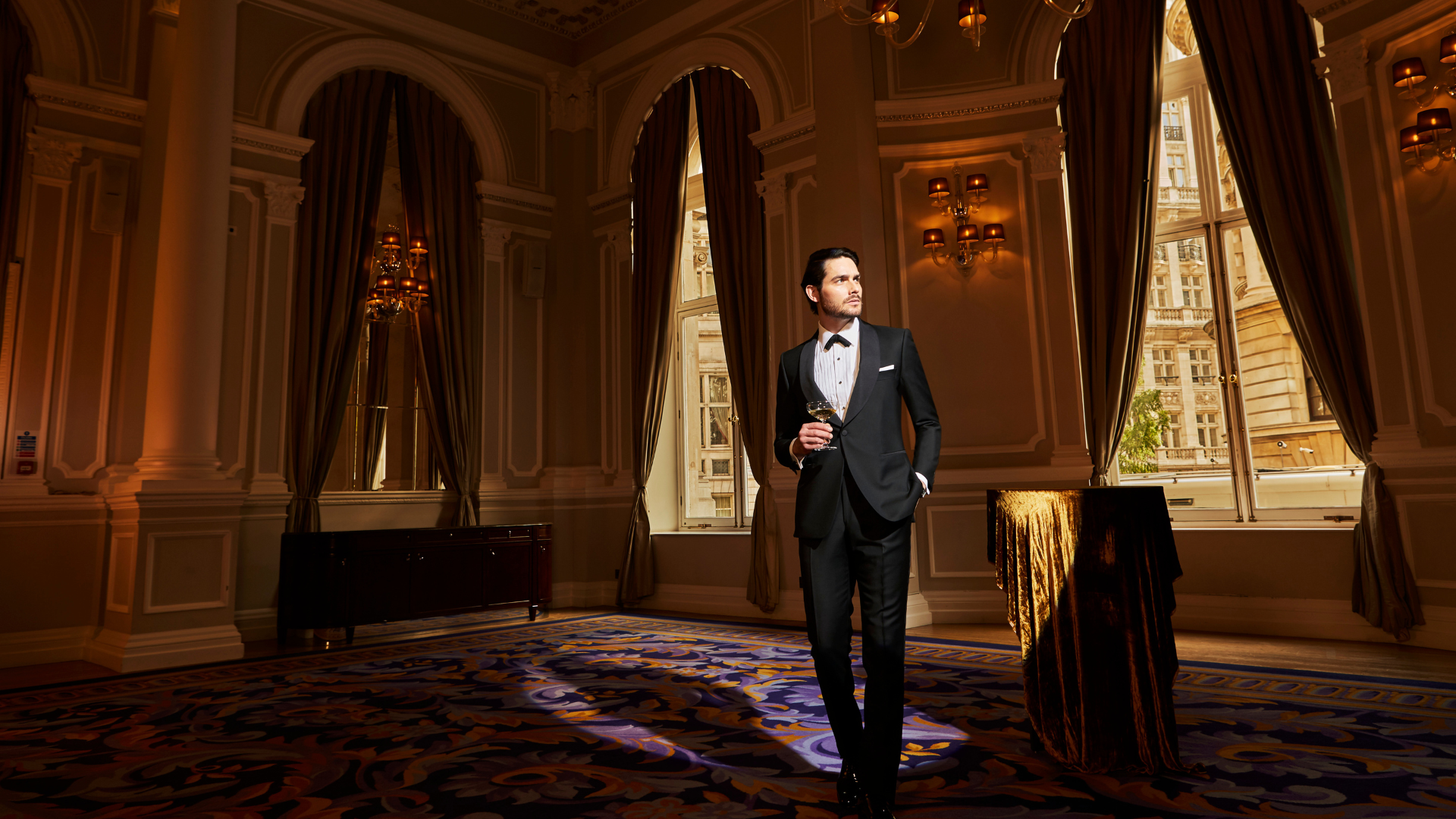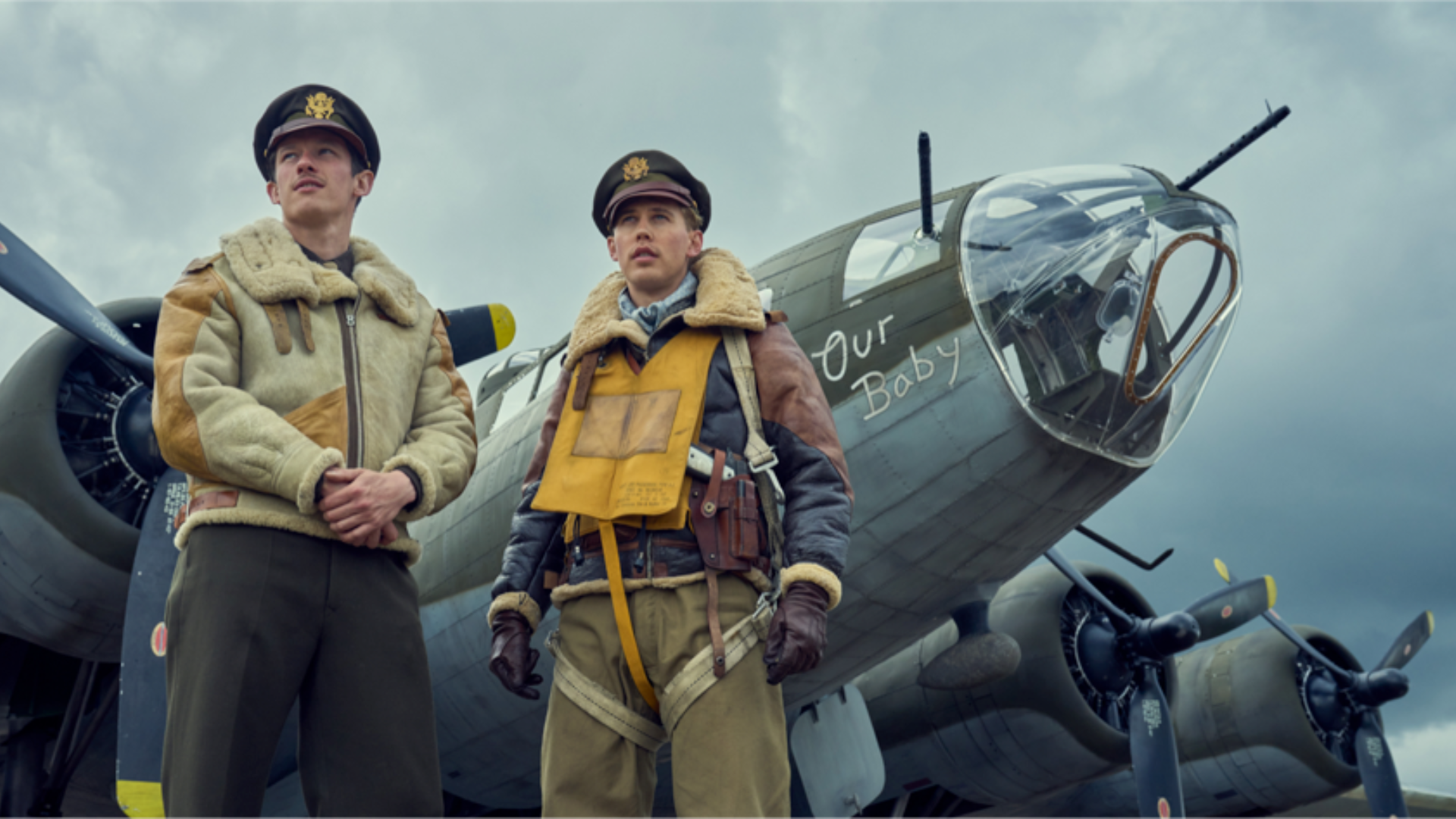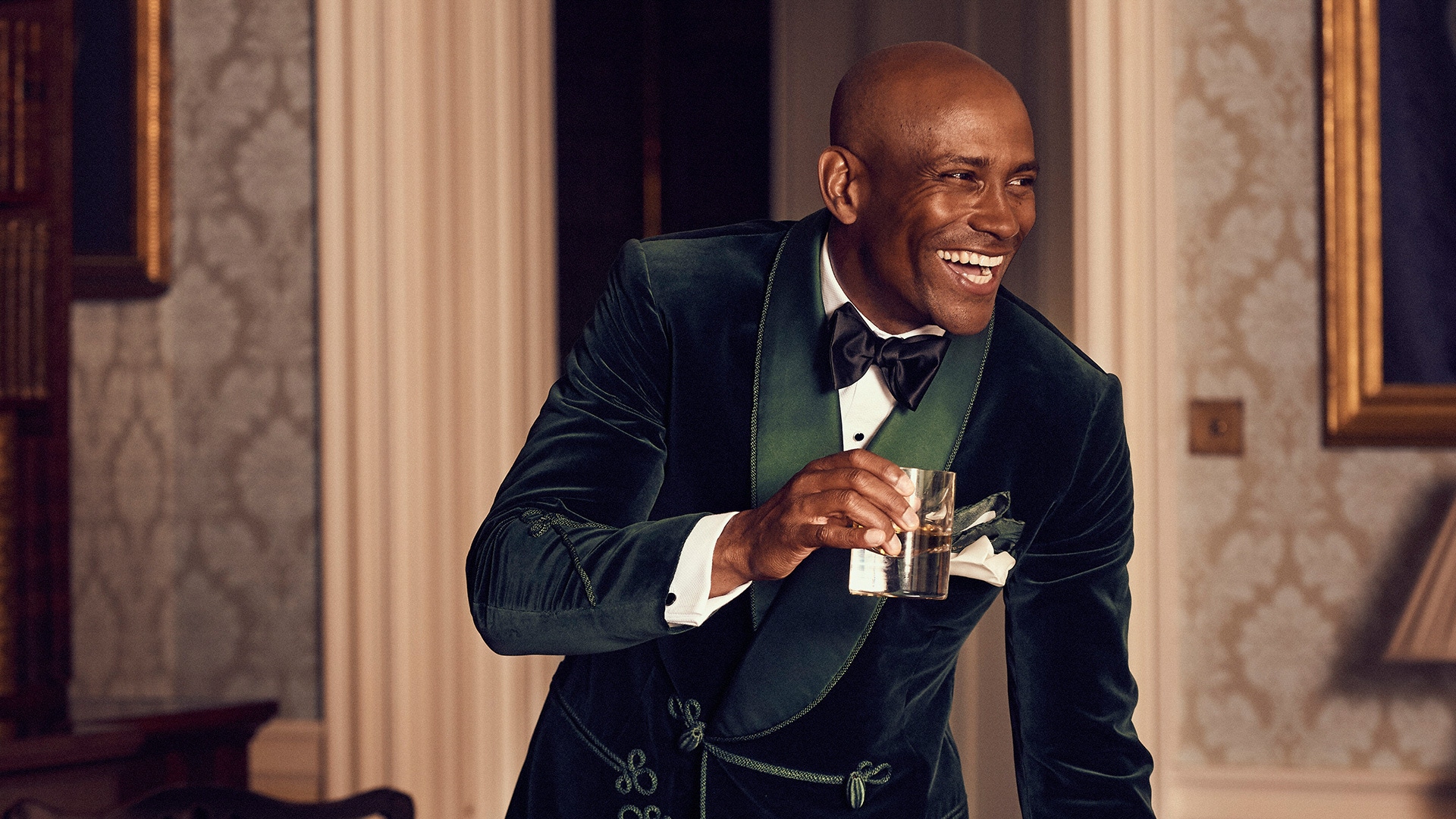The Most Stylish Films That Defined Men's Fashion
As Hollywood awards its best films at the Oscars, we celebrate the movies that forever changed men's fashion — from Cary Grant's iconic tailoring to American Psycho's killer suits.

It's Oscar night, when Hollywood renders its final judgement on the year's most transcendent cinematic works. But even before the red carpet gets rolled out, every film fan knows the true arbiters of iconic movie style are rarely the Academy voters. More often, they're the costume designers, directors, and sartorial trendsetters whose singular visions revolutionised menswear from the silver screen to the streets.
From the rakish individualism of Cary Grant to the brutal minimalism of Reservoir Dogs' criminal crew, cinema has always been an elevated runway for debuting generational shifts in masculine attitude and dress. Think of these films not just as motion pictures, but as comprehensive looks that embedded entire philosophical movements into how men approach their clothes and self-presentation.
On a night celebrating films as diverse as Oppenheimer and Poor Things, it's worth reflecting on those movies that didn't just capture their era, but created new universal definitions of style for decades to come. The kind of cinema that prompts viewers to say "I want to dress like that guy" and kickstarts cultural convulsions. Whether it's Marcello Mastroianni's simple but devastating Continental panache or American Psycho's subversive takedown of capitalist excess, these are the most stylish films that truly deserve a stunning fashion legacy.
8 1⁄2 (1963)
Federico Fellini's landmark film about a filmmaker's existential crisis gave the world one of its most iconic cinematic images - Marcello Mastroianni impeccably attired in a simple but perfect black suit. The Italian actor's character Guido Anselmi embodied the nation's cherished philosophy of "la bella figura" - always presenting oneself with style and beauty. Mastroianni modelled his look directly on Fellini himself, who was known to direct in an elegant suit and tie no matter how chaotic things got behind the scenes. His tailored two-piece, black tie, and white shirt remained a paragon of Mediterranean cool, but it was the oversized black frames that achieved an artistic symbolism all their own. Both modern and slightly professorial, the eyewear became as inseparable from Mastroianni's persona as his dapper dress.




North by Northwest (1959)
When it came to the American idea of male sophistication in the late 1950s, no one embodied it more than Cary Grant's ad man Roger Thornhill. For the Hitchcock thriller, the British tailors at Savile Row's Kilgour crafted a half-dozen identical grey suits that have since taken on an almost mythic quality. The perfectly fitted cut of the versatile, ventless jacket created an elongated silhouette that was both comfortable and impeccably structured. Paired with a white shirt, charcoal grey tie and his famous puckish grin, Grant flawlessly blended upscale insouciance with entrepreneurial confidence. As memorable as the deadly crop duster attack or his scramble across Mount Rushmore's stony visage, the ensemble has stamped itself into our collective subconscious of what defines "looking the part."






American Gigolo (1980)
While the controversial film presented a dark, voyeuristic glimpse into the life of a Beverly Hills male escort, it burned one name into the minds of fashion fans forever: Giorgio Armani. Richard Gere's high-priced gigolo Julian Kaye introduced the world to the famed designer's emphatic brand philosophy of relaxed luxury and casual sophistication. From the character's signature linen suit, soft-shouldered and perfectly rumpled, to the knitwear, easy silk shirts and plush robes he wore around Kaye's lavish home, every aspect of the wardrobe redefined how modern men could dress for both high-powered affairs or merely lounging in comfort. Of course, Gere's black Armani suit for nights on the town birthed a phenomenon and became the ultimate status symbol for young urban professionals of the era. Armani's singular vision of subdued, versatile elegance reimagined menswear.






Reservoir Dogs (1992)
With its crackling dialog and unflinchingly brutal violence, Quentin Tarantino's game-changing directorial debut delivered a wake-up call to the sleepy crime genre. It also reshaped the conception of how screen villains could dress. Costume designer Betsy Heimann intentionally took the opposite approach of the typical sharp-suited mobsters, dressing the gang of jewel thieves in cheap, off-the-rack suits, shirts and ties chosen from bargain bins. But rather than looking sloppy, the simple black jacket and pants with white button-down and skinny black tie projected an unmistakable air of focused, dangerous professionalism. The instantly iconic look hearkened back to the monochrome styling of earlier masters like Fellini, while updating it for modern-day LA criminals. The stark minimalism only heightened the startling violence, suggesting these were deceptively stylish wolves in plain clothing.


American Psycho (2000)
While satirizing the misogynistic men who fueled 1980s Wall Street excess, American Psycho's costume design also became an exacting period piece that captured the era's grotesque obsession with status and image. From the literal-minded morning routine where Patrick Bateman obsesses over every stitch of his Dorsia-worthy designer suit, to the boardroom scenes of sleek pinstripes and suspenders, the film's attention to sartorial detail was relentless. With each designer label being prominently listed, often as a fetishistic status symbol, the film underscored how cosmetic the largely white male corporate elite had become behind their luxuriously tailored facades. While exaggerated to darkly comedic levels, there's no denying the influence the film's mannered interpretation of period costuming left on recent menswear trends.






The Talented Mr. Ripley (1999)
In contrasting the lives of the hardworking Tom Ripley and his profligate idol Dickie Greenleaf, the film highlighted two distinct menswear aesthetics of late 1950s America. As the coddled heir living in seaside Italy, Jude Law's Greenleaf was a paragon of blueblood insouciance in bespoke polos, linen shirts, and perfectly tailored shorts that defined the "barefoot gentleman" style. Outfitted by legendary New York tailor John Tudor, he projected the enviable ease of someone used to inherited wealth and leisure. Meanwhile, Matt Damon's sociopathic Ripley crafted his own meticulously preppy look inspired by campus TYPE-A strivers and upper-crust Ivy Leaguers with his trim khakis, lightweight knits, and timeless navy blazers. The dichotomy showcased the unsustainability of Dickie's indolence in contrast with Ripley's merciless hunger to emulate his idol's lifestyle, no matter how dark the means.




Wall Street (1987)
While films like American Gigolo introduced Armani's luxurious minimalism, Oliver Stone's zeitgeist-capturing drama epitomized the preferred boardroom power uniform pioneered by the great designer. As the morally bankrupt corporate raider Gordon Gekko, Michael Douglas created an instantly iconic image of unrestrained late capitalist swagger. From his exquisitely cut peak-lapel suit in that unmistakable Armani silhouette, to the sharply crisp shirts, burnished suspenders, and oversized striped ties meant to convey authority, every aspect of his menswear was tailored for psychological domination. Douglas' introduction cemented the "Gekkonian" aesthetic of slicked-back alpha male dressing, an archetype still referenced on Wall Street trading floors today. His wardrobe choices mirrored the greed-fueled toxic masculinity he embodied, while also becoming a catalyst for newly prosperous career men to start spending ostentatiously.




The Grand Budapest Hotel (2014)
With Wes Anderson's signature hyper-realized production design, the whimsical fable set in the fictional Eastern European land of Zubrowka created a rich candy-colored world where style was purposefully exaggerated for satirical effect. From Ralph Fiennes' iconic bellboy uniform of a royal purple tailcoat with burnished brass closures and perfectly creased red seamless trousers, to the hotel's flamboyant concierge draped in sumptuous furs, the costume design embraced the absurdity of "Old World" European fashion. Characters like the murderous J.K.L Berensen, played by Willem Dafoe, wore suits and overcoats in startlingly bold hues like electric acid green that trod the line between farce and revolutionary style statement. Even supporting players like Jeff Goldblum were styled to extremes, with sharply peaked lapels and alarming pocket square plumage that would be theatrical on a stage, let alone in real life. But the very purposeful exaggeration throws the fundamentals of classic menswear into high relief against such surreal artifice.


Scarface (1983)
While reviled in many circles upon its initial release, Brian De Palma's excessive cocaine-fueled crime opera has only gained more appreciation as the fashion influence of its very specific styling has reverberated over decades. As remorseless kingpin Tony Montana ascended from dishwasher to drug lord, his wardrobe evolution of vibrant silk shirts embodied every neon-soaked, Art Deco Miami cliche imaginable. Every collar was turned up, every button popped open to expose an amulet of gold chains and a vee of hirsute chest in a primal display of success. The mother of all "Scarface" shirts - that oversized white palm tree printed number - has achieved iconic status through endless imitations. But even background characters like Montana's fellow expatriates or hired goons were dripping in the same aesthetic of unapologetically loud plaids, animal prints, and pastel linen that screams "Cocaine Cowboy" to fashion fans. The lurid menswear perfectly captured the film's blend of sun-soaked opulence and barely-contained violence.


A Single Man (2009)
When fashion designer Tom Ford made his directorial debut with this period drama about a gay professor in 1960s Los Angeles, he delivered a master class in how to outfit leading men with an architect's eye for detail. Every suit, shirt, and accessory Colin Firth wore as the sharply tailored academic George conveyed a specific sartorial message about the character's interiority. From the clean, understated lines of his fitted slate gray and light beige suits that subtly accentuated his trim physique, to the crisp spread collars, textured knit ties, pocket squares and perfectly cut chinos, Firth epitomized the sophisticated, intellectual aesthetic of elite east coast college life. Even the perfectly draping shirts over his toned torso served to highlight his character's struggles with loneliness and repression. Ford's precise styling created an ultra-realized world where every visual element carried thought-provoking significance.






